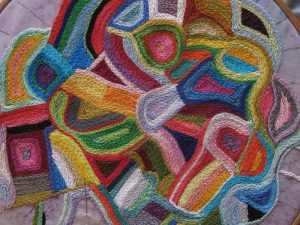
As described in the book Governance as Leadership: Reframing the Work of Nonprofit Boards, to govern comprehensively, boards work in three modes: fiduciary, strategic, and generative. To use a metaphor in which an organization is a boat, boards can make two distinct types of contributions: steering and rowing.
When steering, the board collectively:
- Sets the direction of the organization;
- Determines which values and logic will guide it; and
- Ensures the organization’s resources are used prudently to advance its work.
When rowing, board members individually or collectively expand the organization’s resources by, among other things:
- Offering pro bono professional services or expertise to management;
- Volunteering as front-line service providers;
- Advocating for or championing the organization and its mission in the community; and
- Helping to raise funds to sustain the organization’s work.
It can be useful to distinguish steering and rowing by using a substitution test. Rowing work is substitutable. The board does not need to contribute to the organization’s resources, financial or otherwise, as long as it is satisfied they are adequate. For example, a foundation whose board does no fundraising because of its large endowment is not necessarily ungoverned. Given the assets of the organization, the board is simply not called on to do such work.
In contrast, steering work is not substitutable. An organization whose board is not steering may be led by its executives, and may be influenced by other stakeholders, but it is not legitimately governed unless its board deliberates and makes intentional choices regarding the organization’s values, strategies, and performance. (When it comes to oversight of management, boards are non-substitutable not just on legitimacy grounds but also as a matter of practicality: by definition, management cannot oversee itself.)

Organizations will vary as to how much of which work—rowing or steering—their boards routinely do. The framework below depicts four organizational profiles. The board’s steering contributions run from low to high (left to right) on the horizontal axis. Its rowing contributions run from low to high (bottom to top) on the vertical axis.
Sign up for our free newsletters
Subscribe to NPQ's newsletters to have our top stories delivered directly to your inbox.
By signing up, you agree to our privacy policy and terms of use, and to receive messages from NPQ and our partners.
To take an example: An organization whose board does a great deal of fundraising and outreach on its behalf, but is relatively uninvolved in setting strategy or monitoring performance, would be in the “Helping” quadrant (high on the vertical board axis and left on the horizontal governing axis).
Note that the “High Performing” quadrant—in which a board is governing while also generating resources—is not the only optimal spot for an organization. Depending on an organization’s circumstances, the “Guiding” quadrant might be appropriate. For example, a professionalized organization with reliable revenue sources, an ample endowment, and a high profile may need no board assistance in these areas, and could therefore be justifiably low on the rowing axis. But it would still need governing. In the “Guiding” quadrant, the board does little rowing but is still steering.
From a governing perspective, the “Lagging” and “Helping” quadrants are suboptimal because, in both cases, the board is doing little steering. The “Helping” quadrant can be especially problematic. It is easy for boards in this quadrant to mistake their productivity as rowers—raising funds, doing outreach, or lending expertise to management—for effectiveness as steerers.

This briefing note is offered to complement and integrate some of the strategies and concepts described in Governance as Leadership: Reframing the Work of Nonprofit Boards, by Richard P. Chait, William P. Ryan, and Barbara E. Taylor (New York: John Wiley & Sons, 2005).













